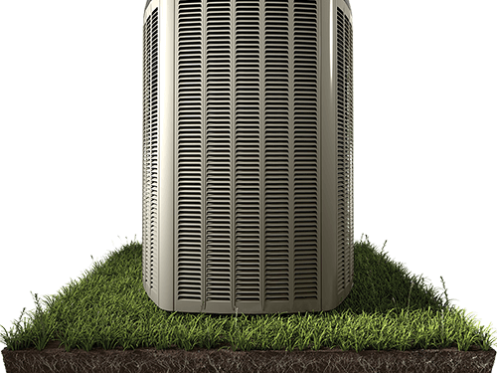It seems challenging to get the right temperature evenly throughout your home on most days. While this could represent a problem with your HVAC system, it could also be the system’s design. Discover what a multizone HVAC system is and how it could help solve the problems of evenly heating or cooling your home.
The Challenge With Single Zone Systems
Most HVAC systems are a single zone, meaning the system controls the temperature with a single thermostat. This leaves your home dependent on air circulation created by the pressure difference between the supply and return vents to distribute conditioned air. While this may work well in small apartments and homes, it presents challenges for larger homes designed for the average family.
With a single zone system, when your air conditioner or furnace runs, it sends conditioned air throughout your entire house. This inhibits efficiency because it extends heating and cooling cycles to adjust the temperature throughout your home.
The next challenge is that you may find some parts of your home are hotter or cooler, depending on the time of day. This happens because of where the sun hits your home based on its daily arc across the sky.
Finally, you may not want to keep all your rooms’ doors open all the time, especially if you have kids or pets. This can inhibit the air circulation needed to distribute conditioned air, leaving your home unevenly heated or cooled.
The Concept of Multizone Systems
The concept of a multizone HVAC system is quite ingenious and automates what people have tried to do for years. In these systems, your home is divided into several zones based on the HVAC load for each area. This could be done by floor, by section, or by room, depending on the needs of your home.
Each zone has its own thermostat to control the function of your heating and AC units. It then has a series of dampers that control the airflow into the area, which is also managed by the thermostat, which directs the conditioned air into the area when it needs adjusting.
The idea is that you can direct more of the conditioned air to those areas that are too hot or too cold. This improves the efficiency of heating or cooling your entire home by reducing the cycle length by targeting airflow delivery.
When Does a Multizone System Make Sense?
Not every home will benefit enough from a multizone system to make it worth the investment. However, there are several situations where it makes a lot of sense to consider this option.
We already mentioned the size of your home. The larger your home, the more difficult it becomes to evenly heat or cool it with a single system. This does not necessarily consider just the total square feet of your home but could be how many floors it has or how spread out a single floor is.
Next, look at the construction of your home. Vaulted ceilings are a challenge because they hold more air to condition, especially if they are only in one or two rooms. Likewise, large windows, such as picture windows, can cause excess radiant heating or heat loss. Both leaves that one room improperly heated or cooled while the rest of the house is comfortable.
Finally, look at the different temperatures in different rooms. You may find certain rooms are constantly hot in the summer or cold in the winter, which you can easily solve with zones. Also, if you have rooms that need different temperatures, such as a nursery or office, zones allow you to make that modification.
How Many HVAC Zones Should You Have?
The number of zones you’ll need depends upon what you find in your home. If you have a multistory home, you may need one for each floor. This happens because heat rises, which requires more cooling for the upper floors in the summer, but more heating for the lower floors in the winter. We already discussed the individual rooms or areas that may need their own temperature setting, requiring their own zone.
The best way to determine how many zones you’ll need is to work with a professional HVAC technician who can perform HVAC load calculations. Known as the Manual J calculation, this looks at how your home, or areas in your home, transfer and generate heat. Completing this calculation for the various areas of your home helps the technician design the zones that will work well together.
Benefits of a Multizone HVAC System
Multizone HVAC systems offer several benefits you’ll enjoy, including extra comfort control, improved energy efficiency, and better air quality. The extra comfort different zones bring, allows you to achieve your ideal comfort throughout your home more evenly. Further, you can keep different rooms at slightly different temperatures, such as if someone appreciates sleeping in a cooler room than the rest of the family.
Multizone HVAC systems also improve your system’s energy efficiency, driving down your energy consumption and reducing HVAC repairs. By closing off those areas that don’t need conditioning, you allow the system to achieve comfort more quickly in those areas compared to the other areas. This allows your system to run close to 10-minute cycles rather than 15-minute cycles.
As your system runs, small particles that pass through your air filter end up circulating back out into your home. By limiting the rooms that the air flows into, you also limit where these particles end up. This makes managing your indoor air quality easier with an air purifier in the rooms that receive the most airflow.
Making a Multizone System Even More Efficient
Simply segregating your system into individual zones helps improve your efficiency. However, there are additional improvements you can make to your HVAC system that will further improve its efficiency. Consider installing a two-stage compressor and a variable speed fan.
With normal HVAC systems, the units are either on or off, meaning they run on high all the time or don’t run at all. This is part of why they run in blast cycles, pumping cold or really hot air into your home for a period.
With a variable speed fan and two-stage compressor, your system doesn’t have to work as hard while maintaining your temperature. The first stage of the compressor runs at between 60% and 70% of the maximum capacity. It’ll run on the first stage for about 80% of the time, simply maintaining your home’s temperature.
Likewise, the variable speed fan will generally run at about 60% capacity, further reducing the energy needed. Between the energy reduction in more efficient hardware and only conditioning those areas that need it, you can see a substantial impact on your monthly energy consumption.
Residents around Denver have depended on Summit Heating & A/C to keep their homes comfortable since 1998. Our trusted technicians provide heating and air conditioning repair, maintenance, and installation combined with indoor air quality solutions and a host of residential plumbing services. Call to schedule your consultation with one of our experts to see if a multizone makes sense for your home.


